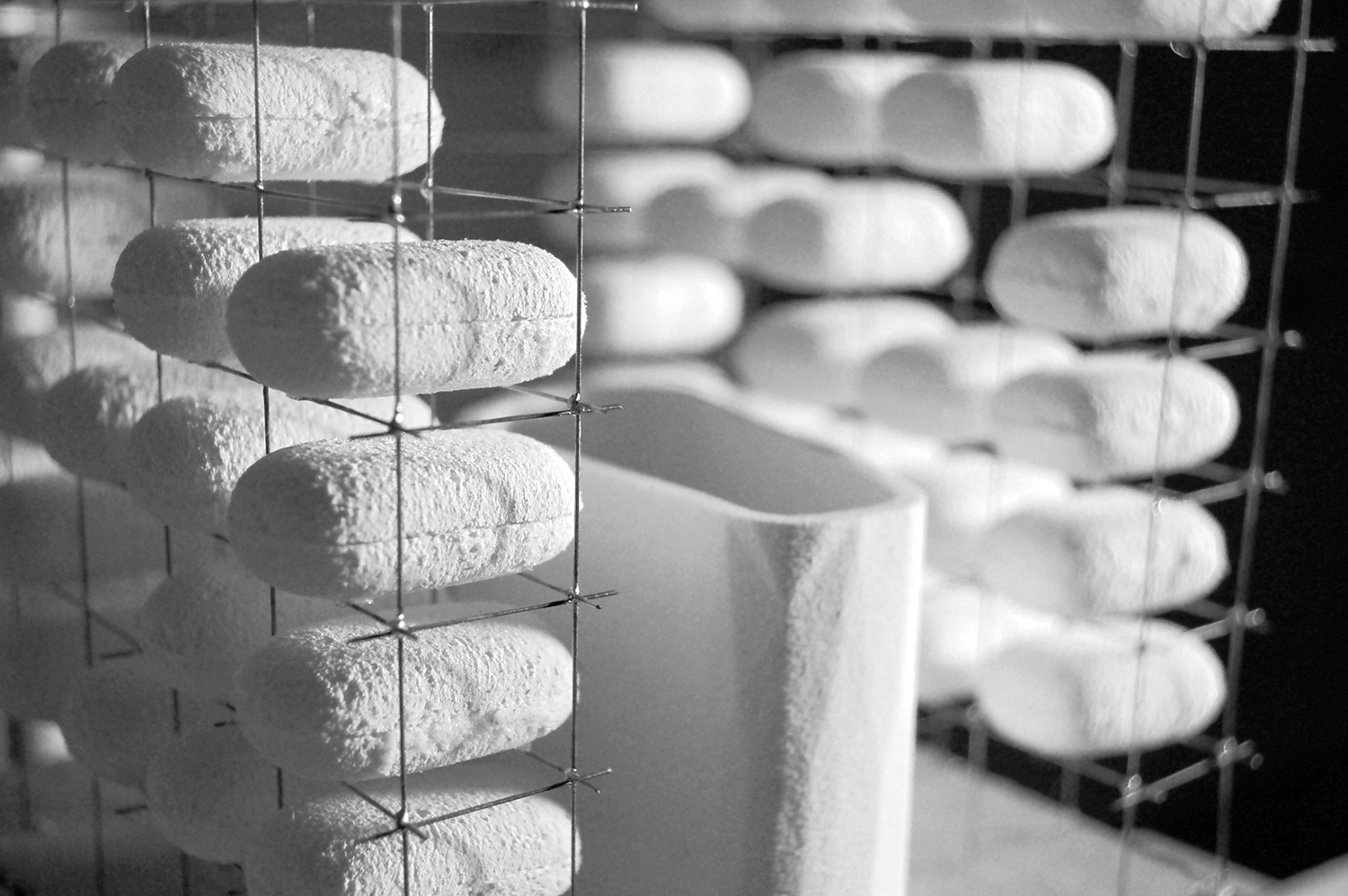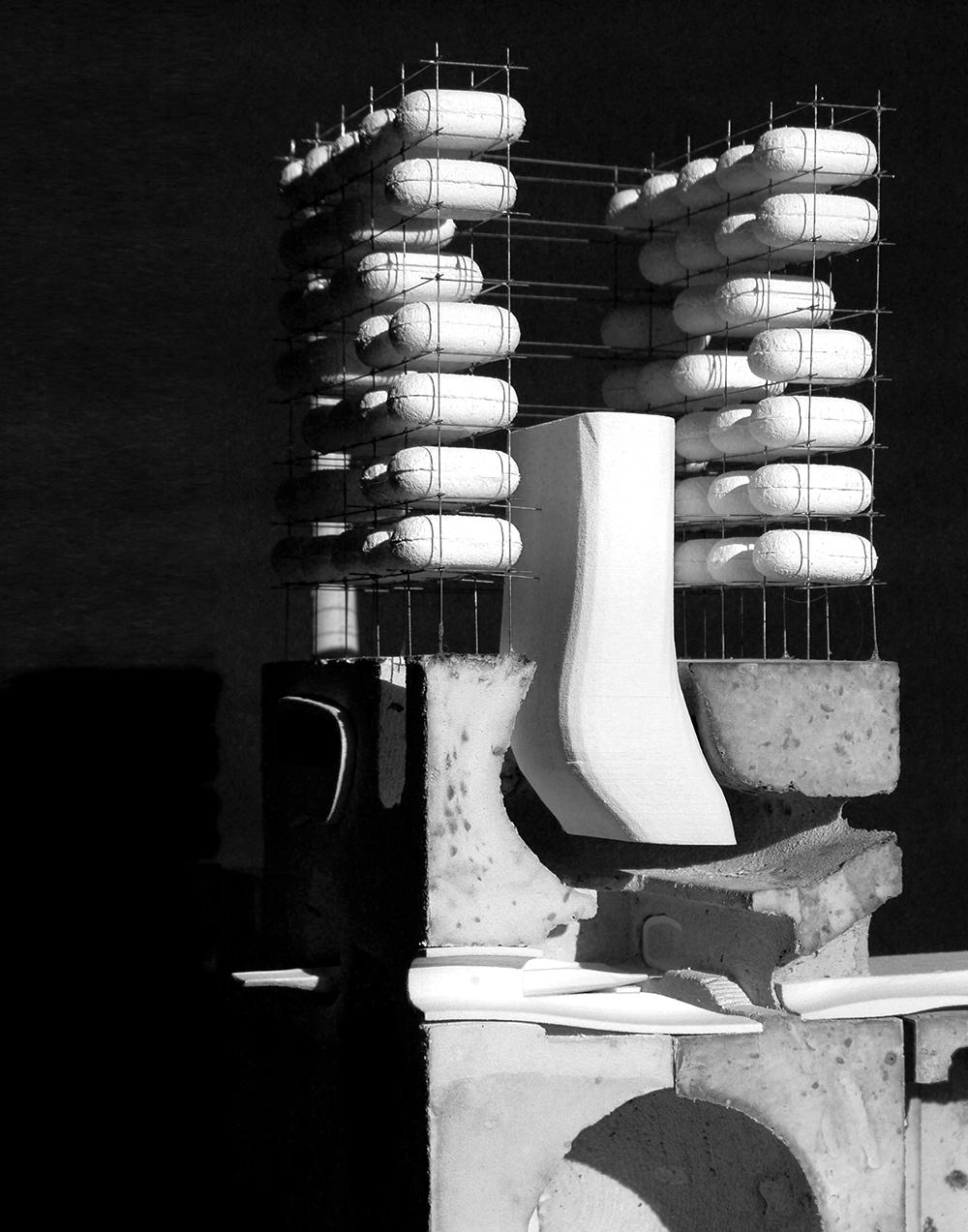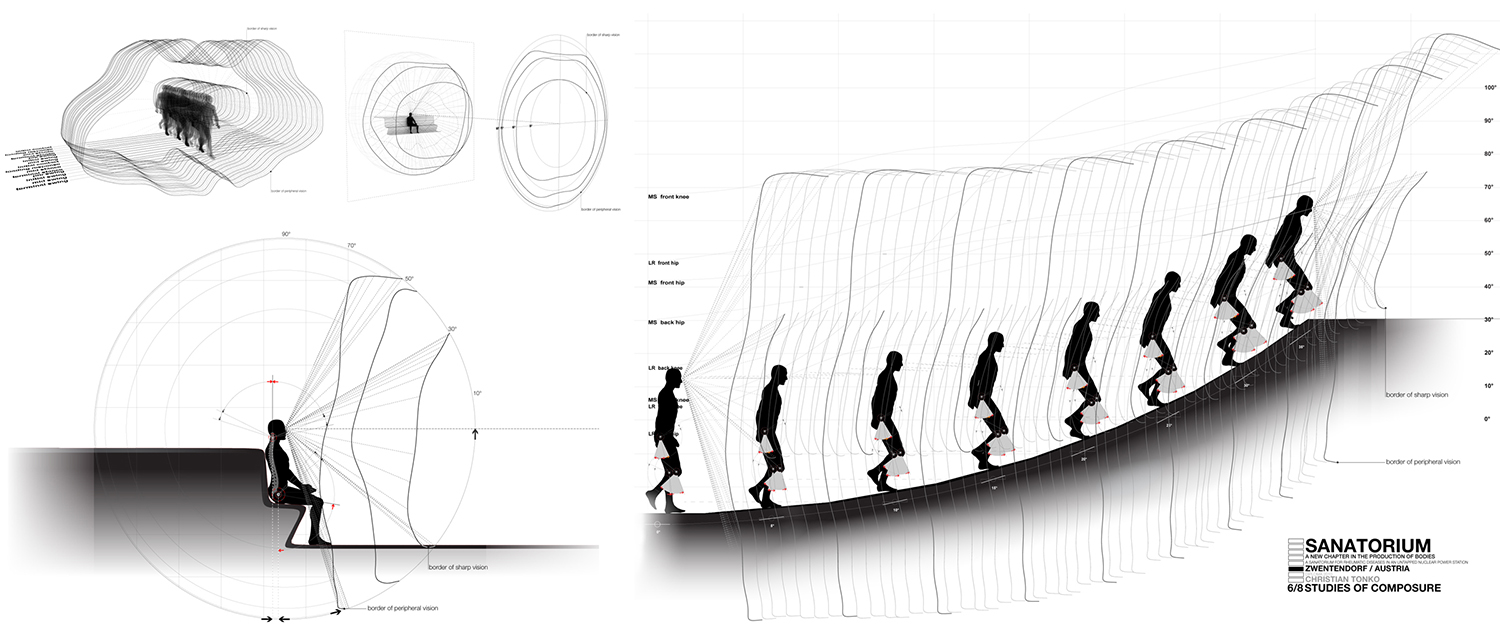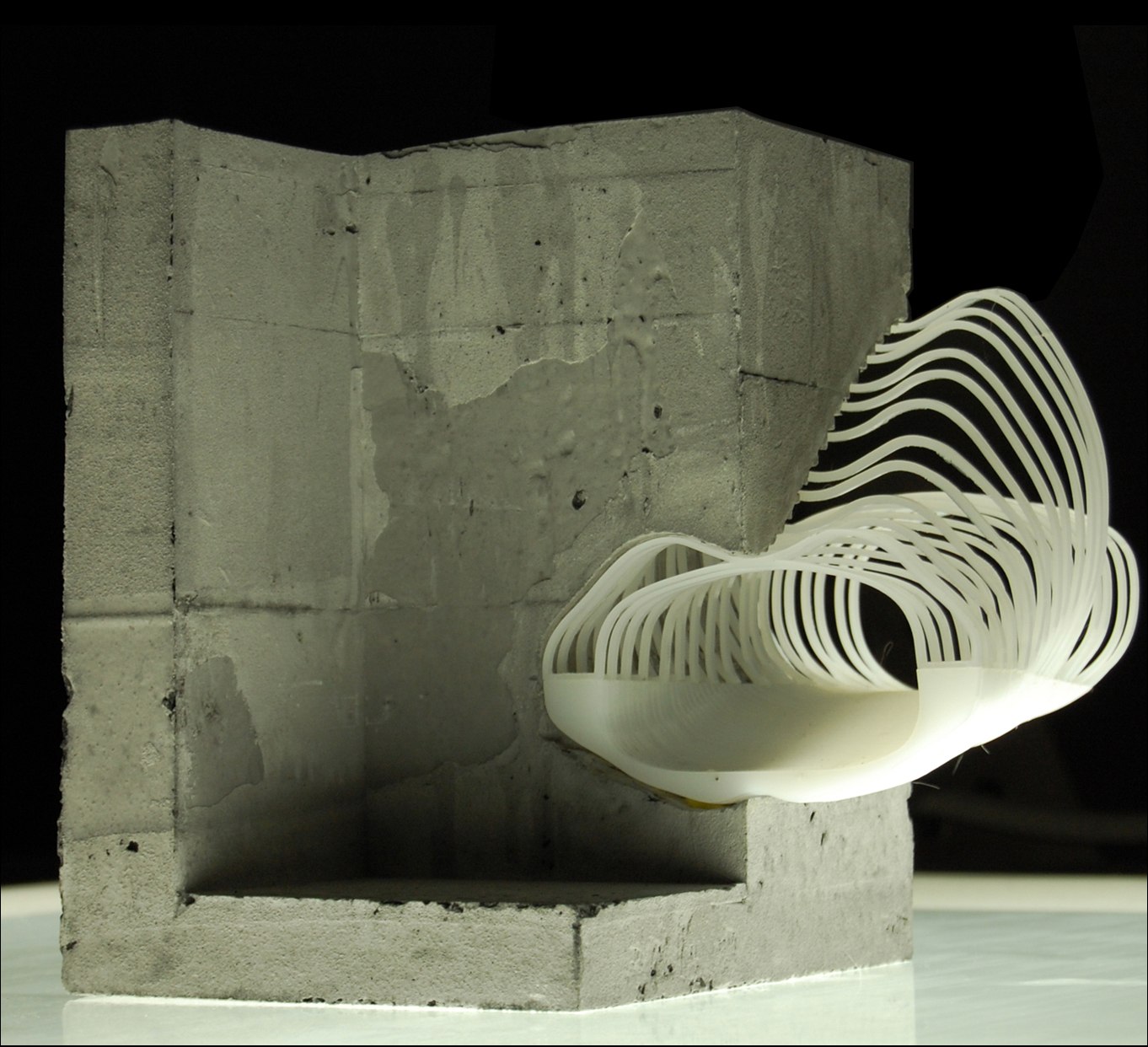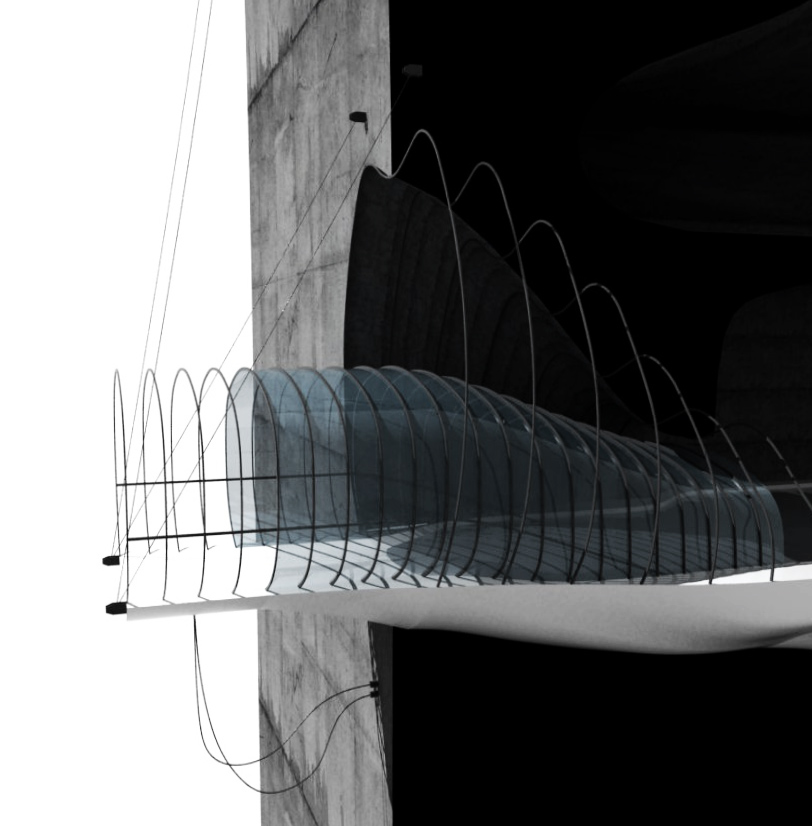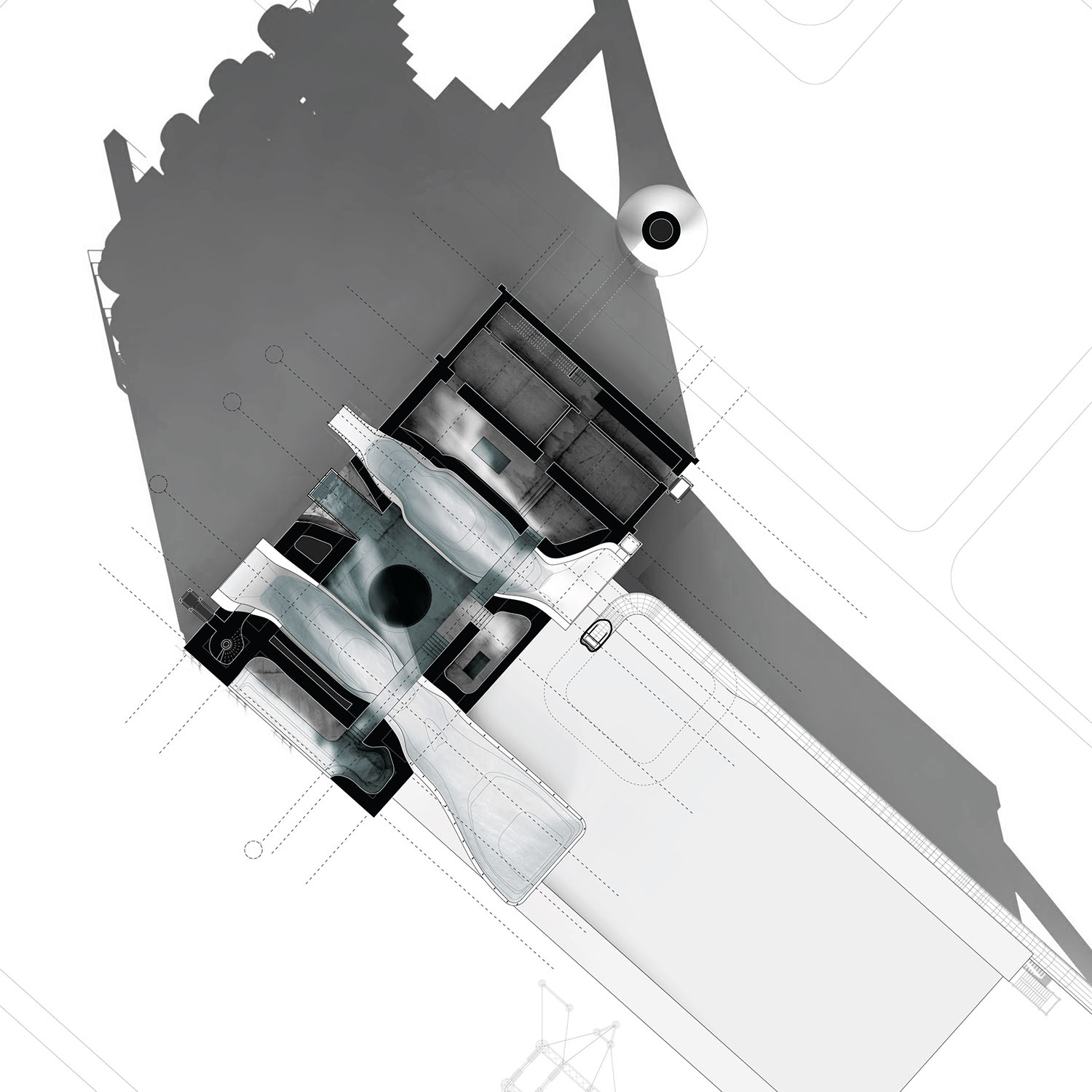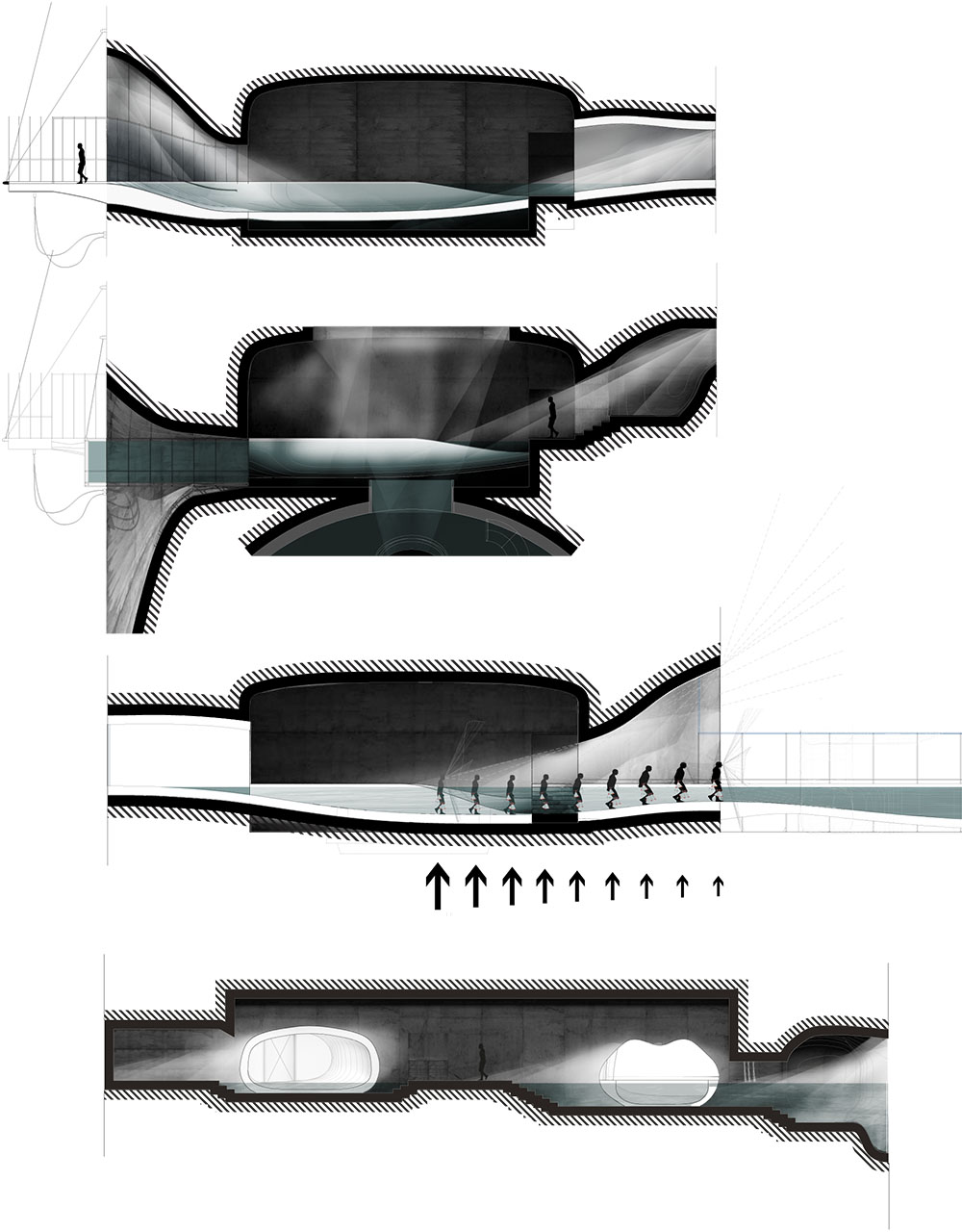SANATORIUM
Zwentendorf, Austria
Diploma
Diploma
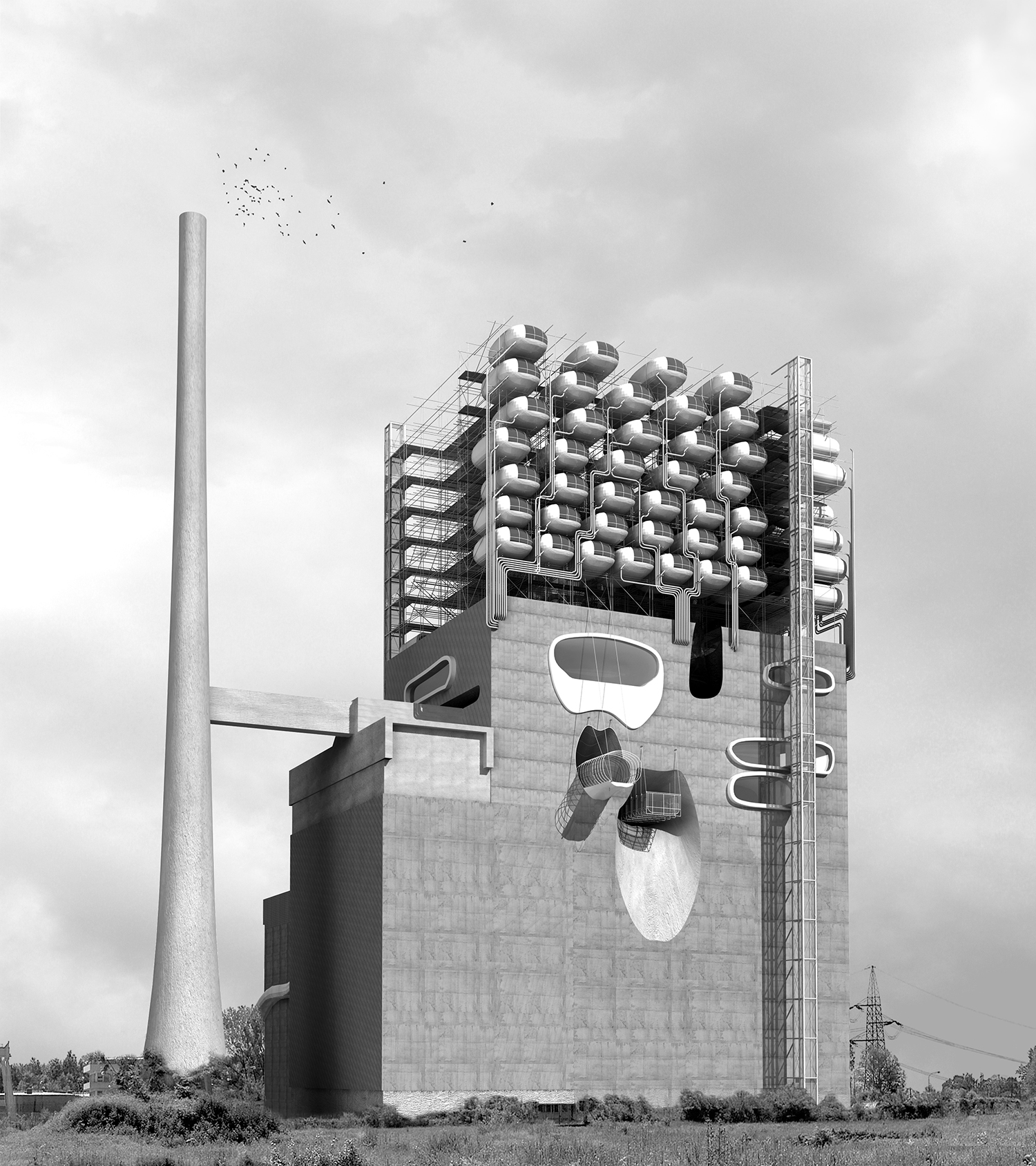
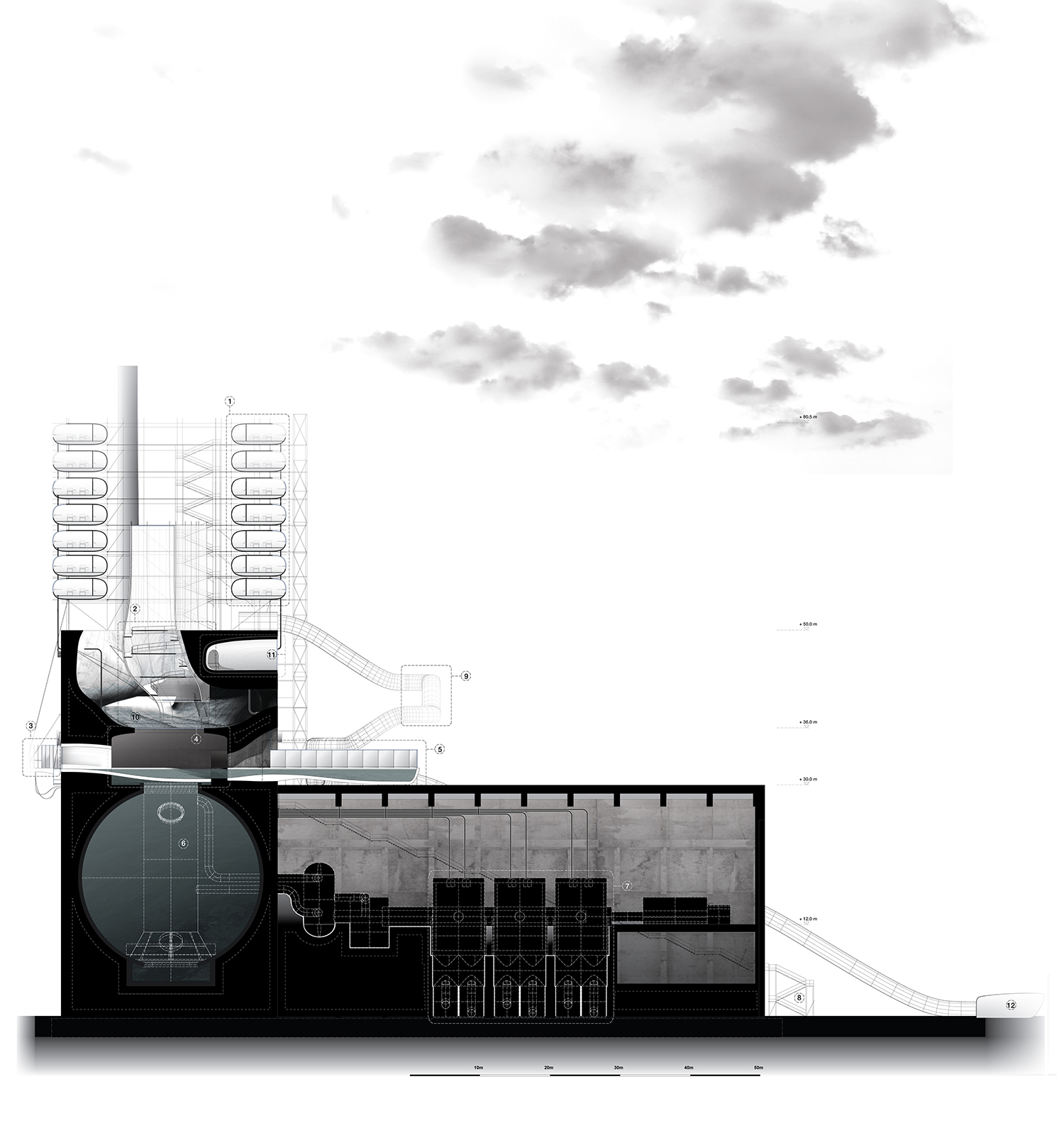
The spatial experience is varied and characterized by opposites. A 360 degree view over the river, the nature reserve, the fields and the village is possible while there is also the option to dive down into the flooded steel bowl security containment. Some spaces are superexposed in terms of light and view while at the same time being climatically enclosed and vice versa. Emphasis is put on the choreography of spatial sequences - especially on the staging of threshold conditions. Movement through the building becomes a diverse experience targeting all senses as well as preconceptions on physiotherapy.
As it is an essential concept in treatment of rheumatic diseases to get the patient out of bed, thats what the building attempts to do. It substitutes the steril, controlled spaces of common hospitals with a variety of conditions and climates and provides threshold conditions between opposite phenomenas in contrast to the specific beneficial climate of the modern architectural machine.
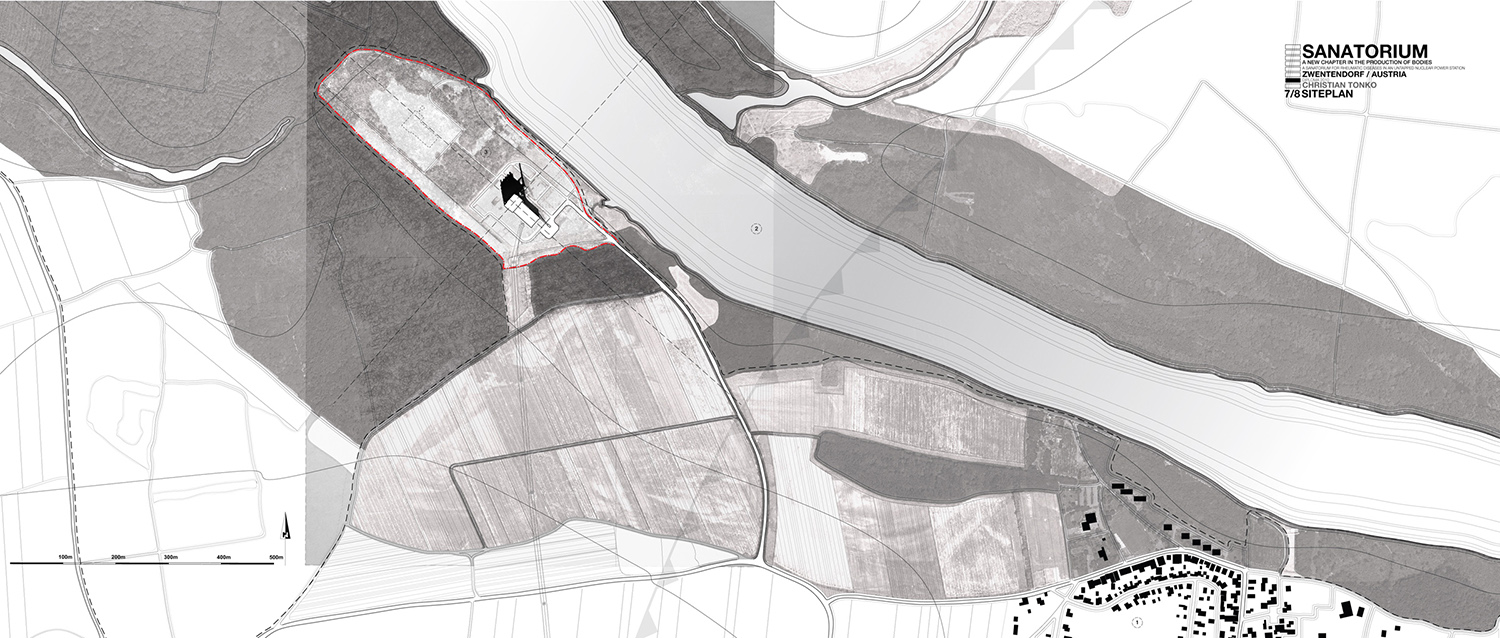

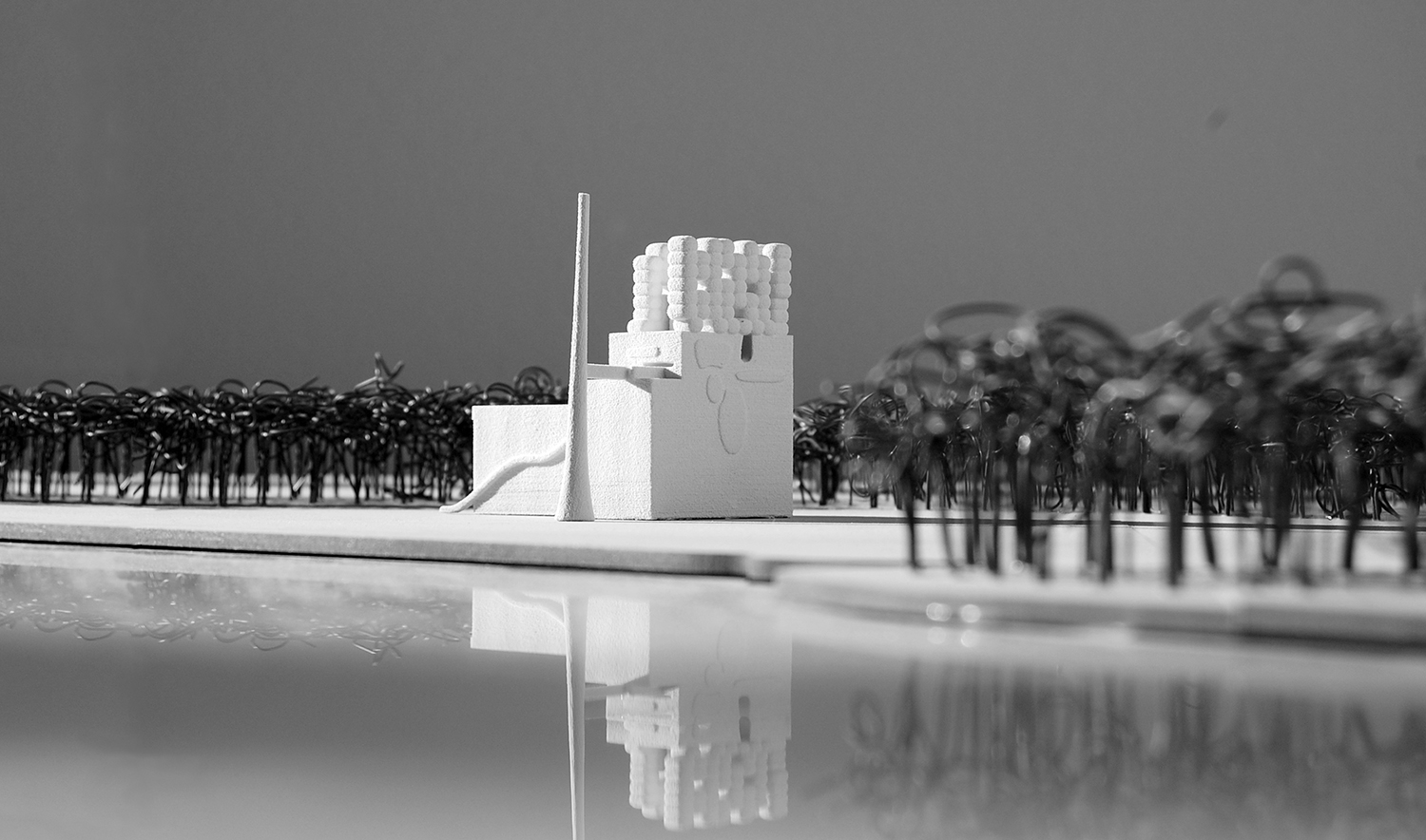
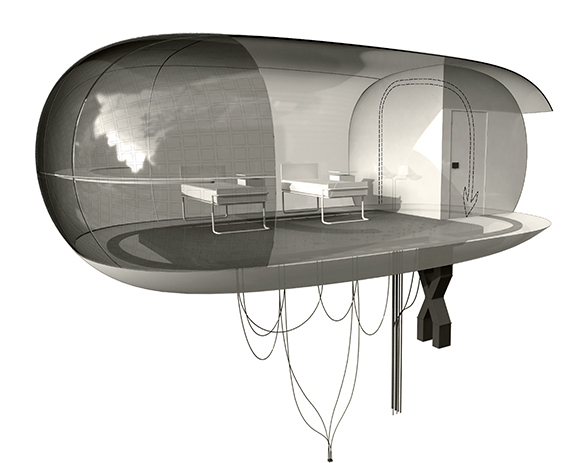
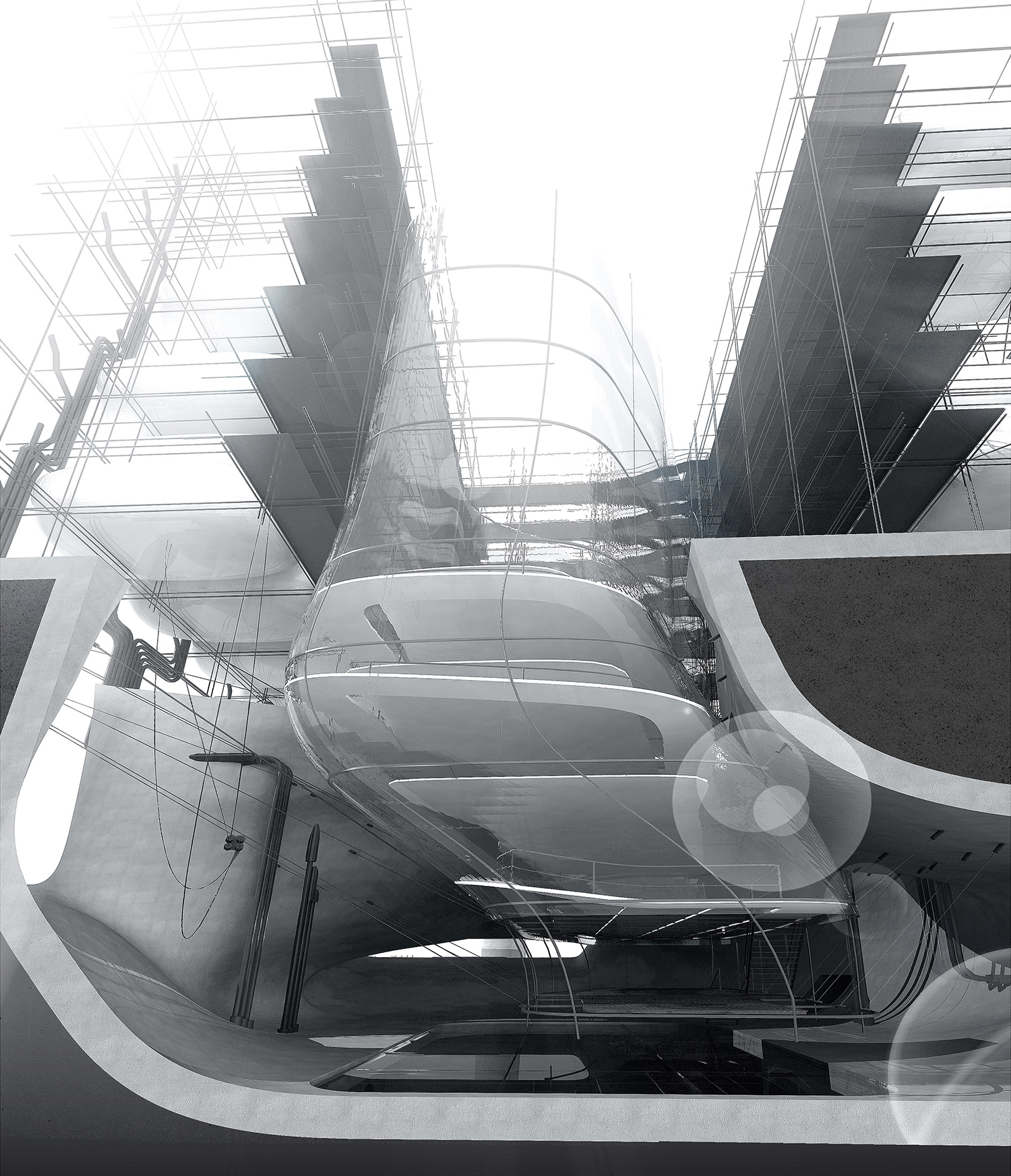
In classic modernity, the organization of bodies in relation to the milieu was led by an idea of hygiene. Nowadays, bodies and climate are being organized according to the idea of energetic efficiency.
The aim of this project is to question the regime of efficiency and to try to conceptualize an architecture which positions itself beyond the territory of power but is modern and sustainable nevertheless. Sanatorium proposes a haven for escapists who seek refuge from ecological panopticism and the uniformity of green buildings. It aims to achieve this through creating an entirely dialectic situation. Illness and wellness, efficiency and extravagance, hygiene and filth, interiority and exteriority, exposure and enclosure, heaviness and lightness come together to create something unclassifiable: a misfit which yet consciously acknowledges the same goals as the mechanisms of power. Sanatorium does not play by the rules of power, but nevertheless pursues the optimization of life.
(The nuclear power station Zwentendorf is the only one in Austria and it has never been used despite that it had been completed and was fully operational back in 1978. It sits on a wide clearance next to the river Danube within a nature reserve approximately one hour from Vienna.)
